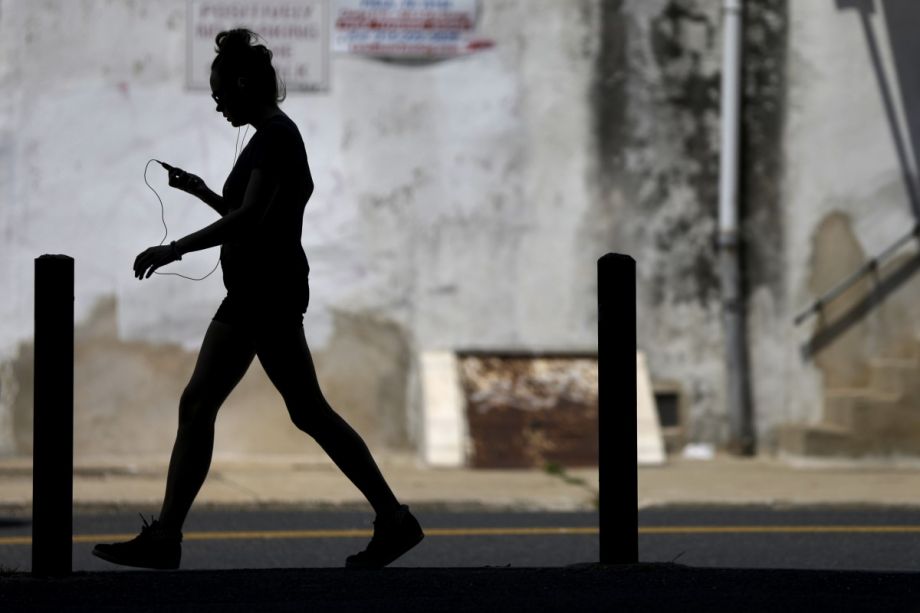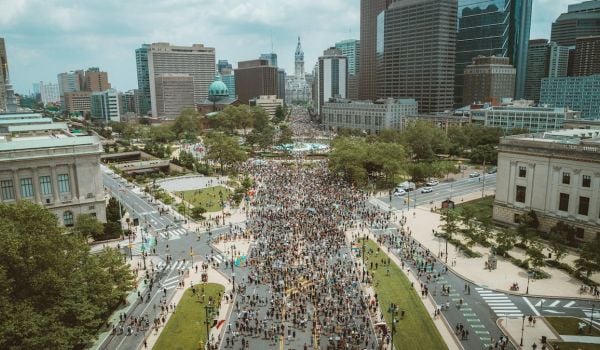One of the most walkable U.S. cities, Philadelphia recently secured $2.67 million of federal funding to be spent on five community-based, nontraditional projects that will enhance safety for pedestrians, bicyclists and public transit riders.
While each of the projects is important, only one directly addresses what is arguably the most basic of infrastructures for pedestrians: sidewalks. A survey by Feet First Philly, a pedestrian-advocacy group sponsored by the Clean Air Council, found that the top pedestrian complaint in the city is poorly maintained sidewalks, whether cracked, broken into chunks, pushed up by tree roots or completely missing. These sidewalks pose a safety issue for all pedestrians (especially those with limited mobility).
So why are Philadelphia’s sidewalks in such poor condition, and why isn’t there public funds allocated to repair them? Legally, sidewalk repair is the responsibility of homeowners, but historically, enforcement of upkeep has been thin. The Streets Department can issue one-time notices to owners over disrepair, which might come with a nominal fine, but there is essentially no follow-up. City law outlines a process for the Streets Department to get sidewalk repairs done without having to pay for the repairs itself. That model, according to License and Inspections (L&I) Commissioner David Perri, formerly of the Streets Department, is convoluted and outdated.
Perri has floated an informal proposal for L&I to take over the enforcement of sidewalk maintenance. The department would be able to issue formal violations to property owners with sidewalk defects, which would fall under L&I’s property maintenance code. If ignored, those violations would become part of the record for each property.
“Pennsylvania law requires the seller to provide certificates from local jurisdiction of any known defects on the property,” Perri says. Any violations would be discovered at the time of any real estate transaction, and the mortgage company, buyer or insurance company could insist that the defect be corrected, as part of a “point of sale strategy.” Already effective in cities like Pasadena, California, this strategy would allow property-rich but cash-poor sellers to complete repairs as property changes hands. For sidewalks that can’t wait for a sale to be repaired, Philadelphia Councilman Mark Squilla suggests L&I would have the authority to make the repair and lean the cost of the repair against the value of the property.
Both Perri and Squilla want to hold accountable those who can afford to repair their sidewalks, and they foresee no differences in enforcement whether the property owners are residential homeowners or owners of income-generating property, such as businesses or apartment complexes. “Commercial areas generate the most pedestrian traffic, so the risk of injuries on a broken sidewalk is increased,” says Perri. “There is no reason why they can’t maintain sidewalks; it’s the cost of doing business.” Strategies to assist low-income residents are in the works, and some see general taxpayer money as part of the repair solution.
“I think [sidewalks] should be part of the money we spend on transportation,” says Dennis Winters of Feet First Philly, “because people who walk are transporting themselves on their feet.” Winters would like to see public funds going toward sidewalk repair on a wider scale. In Los Angeles, the city has full responsibility for sidewalk maintenance, which has proved financially burdensome. Last spring, the city settled a class action lawsuit over dangerous sidewalks filed on behalf of people with disabilities by pledging to spend more than $1.3 billion on sidewalk repairs and improvements. Such a lawsuit would be disastrous for a cash-strapped place like Philadelphia. In contrast, San Jose’s 50-50 cost share program offers a model of how the cost of sidewalk repairs could be split between property owners and city, but that’s not quite a viable option in Philadelphia, whose already slim infrastructure budgets are stretched thin.
Some property owners, on the other hand, don’t understand why their private property is the city’s business.
“I would wonder why the city would have any liability at all. The sidewalk is my property. I’m reliable for keeping it smooth. If someone trips over my sidewalk, they sue me,” says the president of the Center City Residents’ Association, Chuck Goodwin, who voiced concerns with the Perri and Squilla’s ideas. “We’ve essentially decided that private people own these sidewalks and are responsible for them. I’m a little puzzled where the municipal liability is.”
The liability is actually two-tiered: The property owner is responsible if someone sues after an injury due to poorly maintained sidewalks, but the city has secondary responsibility because sidewalks are public infrastructure. This inextricable link between private property and public use underscores the complete streets ordinance, which ensures that city streets accommodate all users of the transportation system, including pedestrians, bicyclists, public transit users or motor vehicle drivers. Complete streets — and the ADA-compliant design standards created to go with initiative — emphasize safety for everyone, including the elderly and those with disabilities, and its upkeep requires buy-in from various stakeholders who are responsible for different parts of the street.
Perri and Squilla’s sidewalk maintenance proposal is garnering much enthusiasm and gaining momentum through the conversations already happening. However, there’s still a long way to go before anything’s in bill form for city council. Issues remaining include determining responsibility for sidewalks abutting vacant or abandoned property; enforcing the repair of sidewalks for which the city is responsible; assisting low-income property owners; and compelling property owners to make repairs in a timely manner.
As Jane Jacobs wrote, sidewalks are places where children can learn “the first fundamental success of city life: People must take a modicum of public responsibility for each other even if they have no ties to each other.” The way we go about maintaining our sidewalks exemplifies her point too.
The Works is made possible with the support of the Surdna Foundation.
Samantha Maldonado is a multimedia journalist based in New York City. She's interested in stories about cities, health, and culture. Read more of her work at samanthamaldonado.com.

















